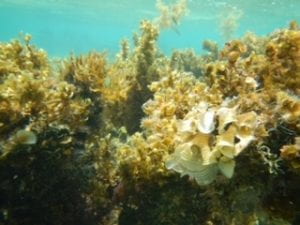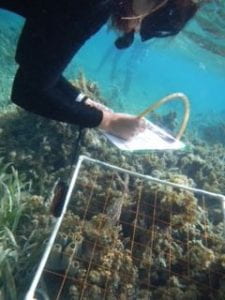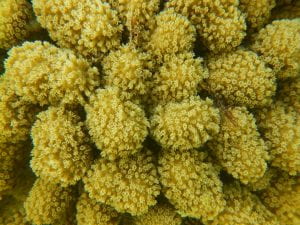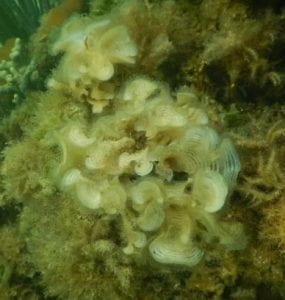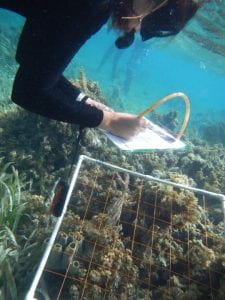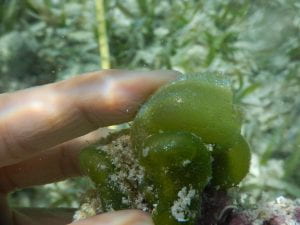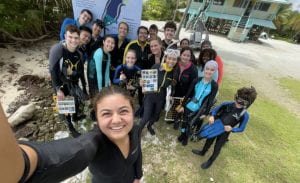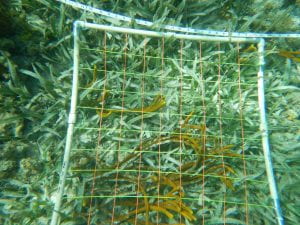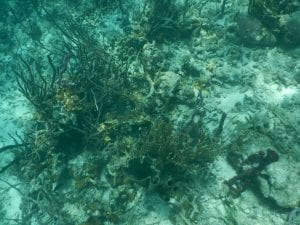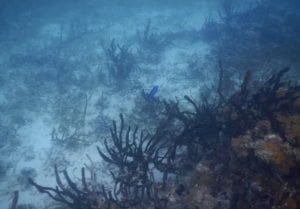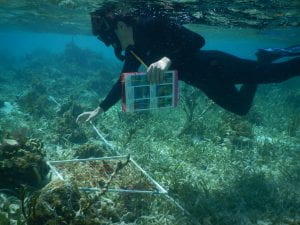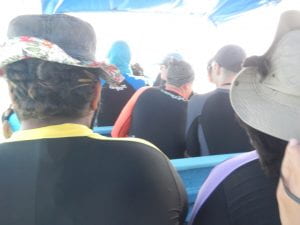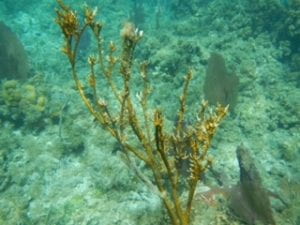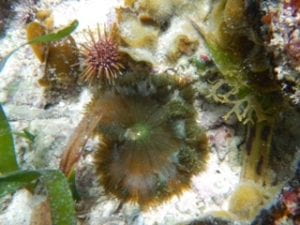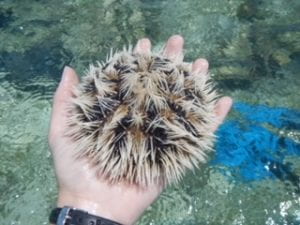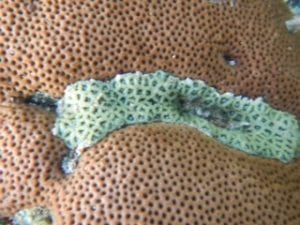Today, in contrast with yesterday, did start out with urchins! Bright and early in the morning we headed out to a patch reef in the MPA to collect data for our research question. Afterwards, we collected urchins for the urchin hunt, and gathered a whopping 52 urchins at the first patch reef, plus one West Indian Sea Egg that I named Harry. We had three slate pencil urchins and 49 E. virdis urchins. We went to another MPA and collected more data, and more urchins. This time around, we got 57! All of them were E. virdis. I also found another sea egg, which I named Sally. I have faith that the two of them will cross the atoll and find each other eventually 🙂 Overall, it was a great morning for echinoderms (the species including urchins, sea stars, sea cucumbers, etc), as we also came across multiple brittle stars and two sea cucumbers!
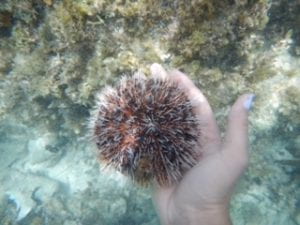
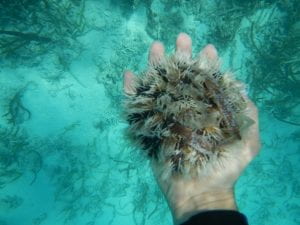
In both MPA patch reefs, I was on the lookout for brown algae. I saw a lot of the saucer leaf algae (turbinaria tricostata) and white scroll algae (padina jamaicensis). I also saw some really cool y-branching algae that had some vibrant blue branches, which I believe to be dictyota menstrualis. Also, I finally figured out what the brown algae clumps were that I couldn’t identify! I believe it to be padina gymnospora, a species related to the white scroll algae. This variety had been covering the reef patch in the MPA that we saw yesterday, so it was nice to figure that out.
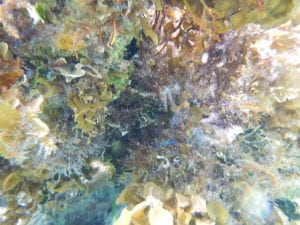
In the afternoon, we went on a “for fun” snorkel in the reef flats. We came across a reef that was mostly algae, but had some sparse coral and lots of fish varieties! We came across three lionfish, but none of them were caught, unfortunately. We did spear one earlier, bringing the current lionfish count to two. Also, fun fact lion fish catching is the only kind of fishing allowed in the conservation zone, since it is an invasive species!
There were also several giant lobsters, yellow jacks, damsel fish, parrot fish, and angel fish! One of the areas was like a fish highway, which was cool to see, in spite of the reef not really being a true coral reef anymore. As I mentioned, the reef area was mostly algal-dominated, and there was rotting sargassum covering a lot of the reef floor. As the sea weed rots, it releases nutrients in the water, which actually promotes more algal growth, rather than coral growth. The fact that there was healthy coral there at all was quite impressive.
But that was about it for today! Tomorrow, we will most likely be either going to the forereef or a non-MPA to do more research, and then we will be doing some sort of land activity. I will let you know tomorrow!
-Elena
